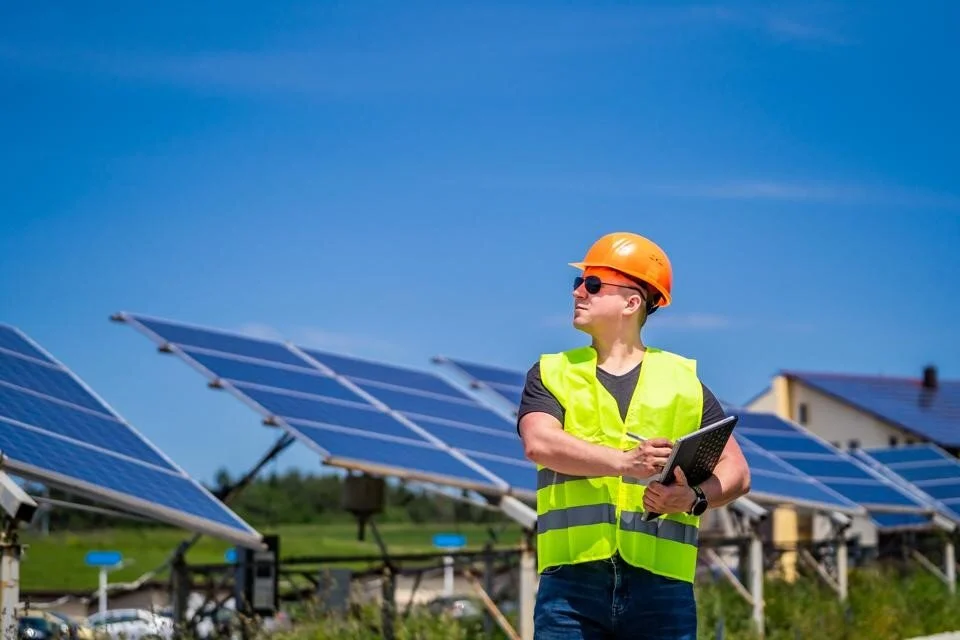Can Onsite Generation With Microgrids Help Zap Widespread Blackouts?
Source: Ken Silverstein · FORBES · | August 11, 2020
Green energy worker is conducting on-site inspection visit at the new energy base. GETTY
Is it more efficient for electricity to be centrally generated before sending it over high-powered transmission lines or is it better for the power to be produced onsite and then delivered by localized microgrids?
Central generation is less expensive per kilowatt hour than that of distributed generation. But onsite generation with microgrids can lead to fewer “line-losses” because the electricity does not have to be “wheeled” across the country. That can result in losses of 5% of the power generated — a huge amount given the total volume of electricity that is consumed each year.
“We are in the middle of a health emergency and we don’t need more pollution and more bad air days from another fossil fuel power plant,” writes Jeff Tittel, with the New Jersey Sierra Club, adding that microgrids lead to the greater use of renewables as well as fewer emissions and greater reliability. The environmental group is trying to get New Jersey to use distributed assets as part of the state’s masterplan to hit 100% clean energy by 2050.
Three decades ago, national efforts encouraged the building of more large power generation that feeds into local distribution networks, partly paid for through power purchase agreements that guarantee the sale of that electricity. More recently, however, policies have encouraged more green energy development, which conforms more to a decentralized system.
Distributed generation and distribution centers on solar power, battery storage and microgrids. To that end, California’s energy regulators just laid the framework for utilities to develop microgrids with battery storage — a move that comes in the aftermath of the state’s wildfires that have ravaged local economies and left consumers without power. It is a direct response to PG&E Corp.’s bankruptcy that resulted from a deadly and destructive wildfire in 2018.

